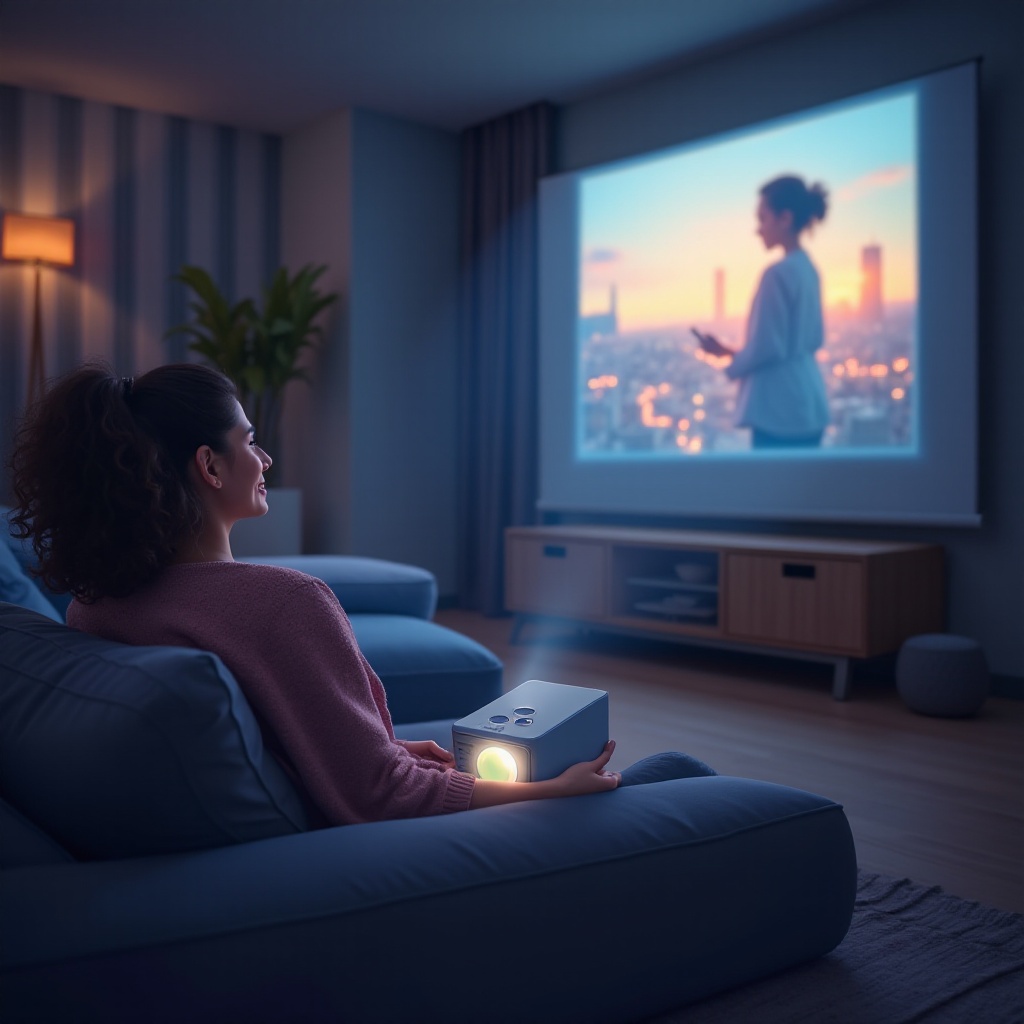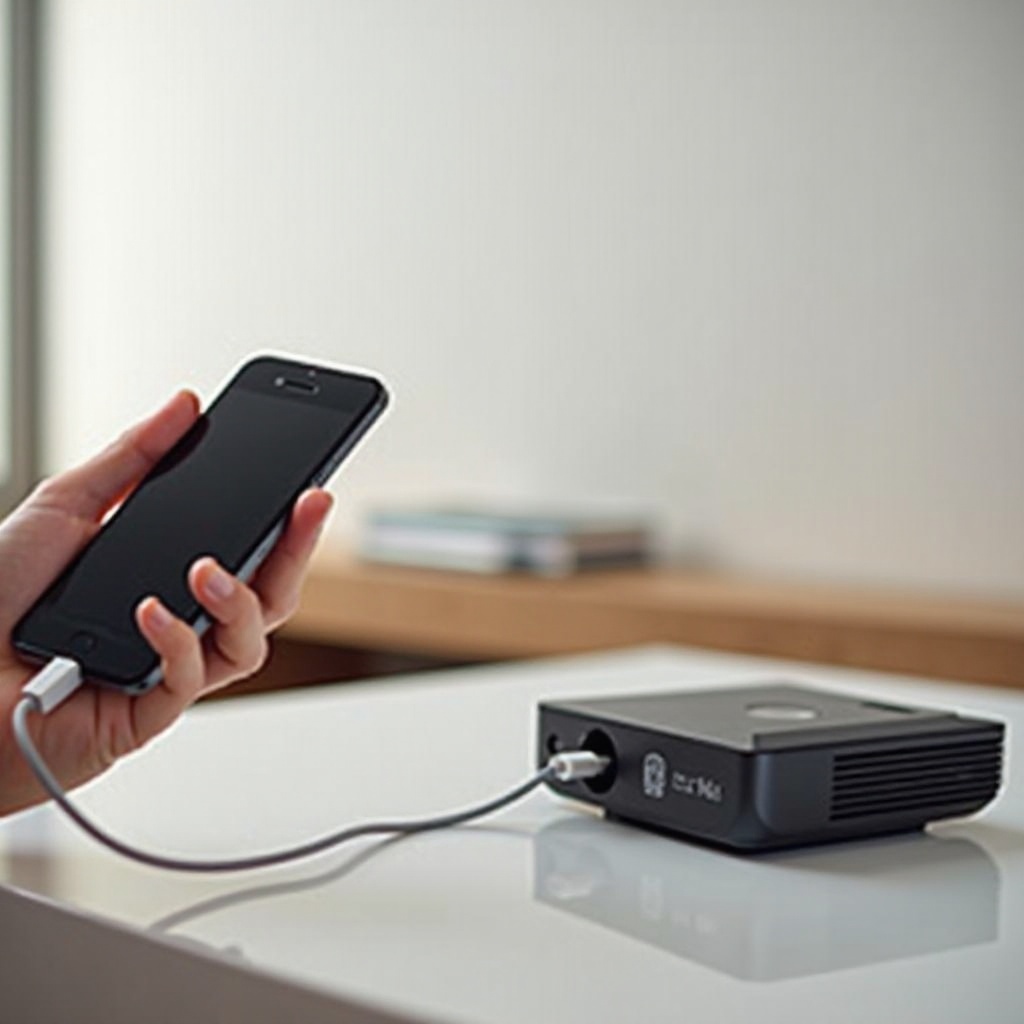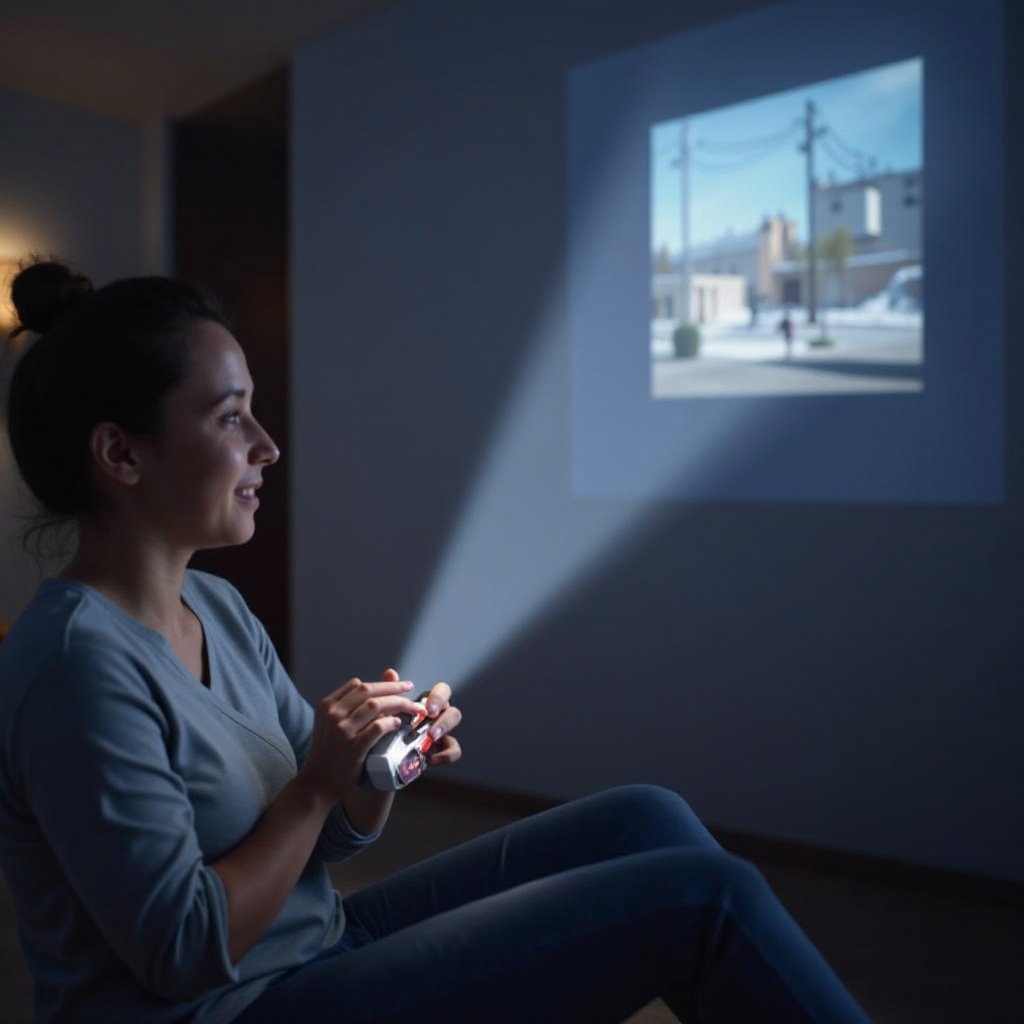Introduction
Smartphone projectors have revolutionized how we share and view content. Whether you’re hosting a movie night, presenting business slides, or creating an immersive gaming experience, these compact devices can transform any space. Understanding how to use a smartphone projector effectively can enhance these experiences significantly. This guide provides all the information you need to get started.

Getting Started with Your Smartphone Projector
Before diving into the technical details, familiarize yourself with your projector and smartphone compatibility. Ensure your smartphone has the necessary ports or wireless capabilities. Check the projector’s manual for any specific setup instructions. Gathering all the necessary cables, remote controls, and other accessories will streamline the setup process and ensure a smooth experience.
Knowing the model of your projector and your smartphone allows you to determine the best connection methods. This initial preparation is crucial for ensuring a seamless setup and optimal projection quality.
Connecting Your Smartphone to the Projector
Connecting your smartphone to your projector is crucial. Your choice of connection can impact the quality and stability of your projection.
Wired Connections: HDMI and USB
- HDMI: One of the most reliable wired connections, using an HDMI adapter can provide a high-quality display. Connect the HDMI adapter to your smartphone and then plug the HDMI cable into the projector.
- USB: Some projectors offer USB connections. Using a USB-C to USB-A (or other compatible format) cable, connect your smartphone to the projector. This method may also provide power to your device, extending viewing time.
Wireless Connections: Wi-Fi and Bluetooth
- Wi-Fi: Modern projectors often support Wi-Fi connections. Use screen mirroring or casting options available on your smartphone (like Chromecast or AirPlay) to connect to the projector wirelessly. Ensure both devices are on the same Wi-Fi network.
- Bluetooth: Some projectors enable Bluetooth connectivity for audio devices and, occasionally, for streaming. Pair your smartphone with the projector through the Bluetooth settings to stream audio or video.
Establishing a secure and stable connection ensures uninterrupted viewing. Whether wired or wireless, choosing the appropriate method based on your environment and usage is essential for the best experience.

Adjusting Projector Settings for Optimal Use
After establishing a connection, adjust the projector settings to enhance your viewing experience.
Picture Quality: Brightness and Contrast
- Brightness: Adjust the brightness level on the projector menu. A well-lit room requires higher brightness, while a dark room needs lower brightness to prevent strain on your eyes.
- Contrast: Increase contrast for more defined images. Access this setting through the projector’s menu to find a balance that provides clear and sharp visuals without washing out the colors.
Sound Settings: Using External Speakers
Internal projector speakers may not always provide the best audio experience. Use external speakers for improved sound quality.
- Connecting speakers: Use the 3.5mm audio output or Bluetooth to connect external speakers.
- Audio adjustments: Adjust the audio settings on the projector for clear sound quality. Ensure no audio lags when using wireless connections.
Screen Alignment and Size Adjustments
- Keystone correction: This helps align the image if the projector is slightly tilted. Navigate to the keystone correction option in your projector’s menu settings.
- Zoom and focus: Adjust the zoom to fit the image within your screen or wall space. Use the focus settings to sharpen the image, ensuring clarity in the projected content.
Perfecting these settings not only enhances picture and audio quality but also ensures a more comfortable and enjoyable viewing experience.

Practical Applications for Your Smartphone Projector
Understanding how to use a smartphone projector opens many possibilities for entertainment and productivity.
Home Theater Setup
- Movie nights: Project films onto a blank wall or screen for a theater-like experience. Pair with a sound system for immersive audio.
- Streaming services: Access Netflix, Hulu, or other streaming platforms from your smartphone and project them for a larger viewing experience.
Business Presentations
- Professional use: Use the projector to present slideshows, data, and reports during business meetings. It’s portable and reduces the need for larger equipment.
- Interactive displays: Engage your audience with interactive touchscreens and laser pointers, enhancing your presentation.
Outdoor Movie Nights
- Setup: Ideal for summer nights, project movies in your backyard. Ensure the projector is waterproof or protected from the elements.
- Portable speakers: Since outdoor environments can be noisy, portable speakers will ensure everyone can hear clearly.
Using a smartphone projector offers flexibility and convenience across various scenarios, making it a versatile tool for different applications.
Troubleshooting Common Issues
While using a smartphone projector, you might encounter some common issues. Here’s how to resolve them:
Connection Problems
- Check cables: If using a wired connection, ensure cables are securely connected.
- Wi-Fi strength: For wireless connections, ensure a strong Wi-Fi signal. Reconnect the devices if necessary.
Poor Image Quality
- Adjust settings: Tweak the brightness, contrast, and focus until the image improves.
- Clean lens: Dust on the projector lens can blur the image. Clean the lens with a microfiber cloth.
Overheating and Battery Drain
- Ventilation: Ensure the projector is used in a well-ventilated space. Overheating can reduce performance.
- Power sources: Use adapters or power banks to sustain the smartphone battery, especially for extended use.
Troubleshooting these issues proactively helps maintain the performance of your projector and ensures a smooth projection experience.
Maintenance and Care Tips
Regular maintenance of your smartphone projector ensures longevity.
- Clean the lens and vents: Use a soft cloth for the lens and compressed air for vents to avoid dust buildup.
- Proper storage: Store in a dust-free, cool environment when not in use to prevent damage.
Consistent care and maintenance will keep your projector in top condition and ready for use whenever needed.
Conclusion
Using a smartphone projector can significantly enhance your viewing and presentation experiences. With proper setup and adjustments, you can enjoy high-quality images and sound. Whether for home entertainment, business, or outdoor fun, understanding your device ensures optimal performance. Happy projecting!
Frequently Asked Questions
What types of smartphones are compatible with most projectors?
Most modern smartphones with Android or iOS systems can connect to projectors, especially if they support HDMI, USB, or wireless connections like Wi-Fi and Bluetooth.
How can I enhance the sound quality while using a smartphone projector?
Enhance sound quality by connecting external speakers using the projector’s audio output or Bluetooth. Adjust audio settings for clarity and sync.
Are there any special apps required for wireless connections?
Yes, applications like Chromecast, AirPlay, or proprietary apps from projector manufacturers (e.g., Epson iProjection) help establish and maintain wireless connections between your smartphone and projector.